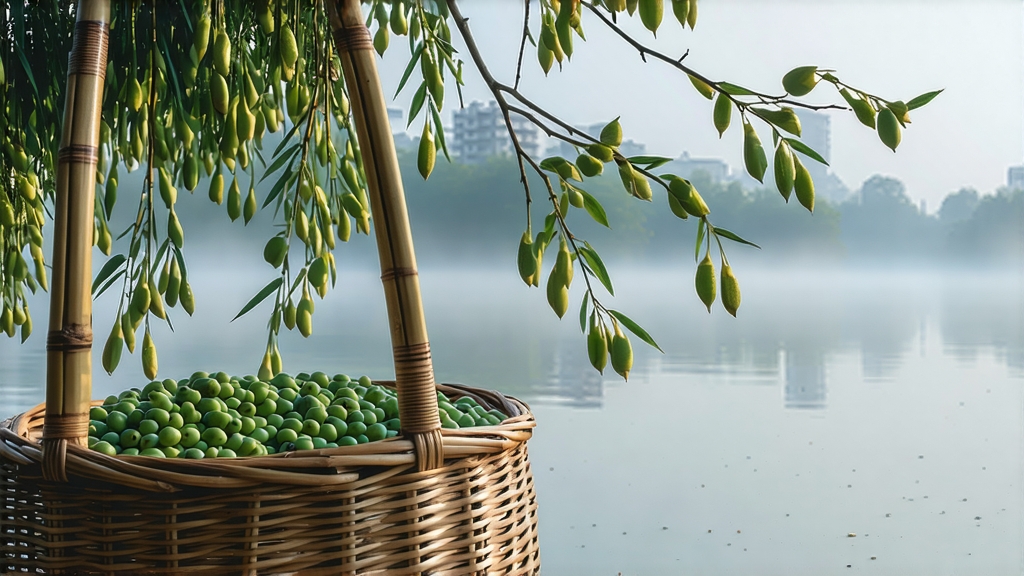
Biluochun, whose name literally means “Green Snail Spring,” is one of China’s ten most celebrated teas, yet it remains a delicate secret outside serious tea circles. Grown on the mist-laden islands and peninsulas of Taihu Lake in Jiangsu Province, this green tea is prized for its tiny, spiral-shaped leaves, an aroma that Chinese poets once described as “scaring the fish away,” and a taste that compresses the entire Jiangnan spring into a single sip. To understand Biluochun is to listen to a 1,200-year conversation between monks, emperors, tea gardeners, and the lake itself.
Historical whispers
The first reliable mention appears in the Tang dynasty’s “Tea Canon” supplements, but the tea achieved imperial fame during the Kangxi reign (1662-1722). Legend says the emperor was traveling incognito when a nun served him an unnamed tea whose fragrance astonished him. He asked its name; locals replied “xia sha ren xiang” (“scary fragrance”). Finding the phrase inelegant, the emperor renamed it Biluochun after the lake’s snail-shell curves and the season of first picking. The name stuck, and annual tribute quotas soon exhausted entire villages.
Micro-terroirs within one lake
Although the Protected Geographical Indication covers all of Dongting Mountain (actually two islands, Dongshan and Xishan), connoisseurs distinguish at least four micro-zones. The original “zhenshan” core lies on Dongting Xishan, where orange, loquat and bayberry trees intercrop with tea bushes, their flowers and fruits subtly scenting the leaf. Further uphill, “miaogao” gardens sit on weathered granite; here slower growth concentrates amino acids, yielding a sweeter, almost milky liquor. Eastern slopes called “houdong” receive morning sun filtered through lake vapor, creating a greener, more astringent style favored in Shanghai. Finally, the outer ring of “huanhu” fields on the mainland produces bulk, everyday Biluochun whose leaves are larger and fragrance lighter. Each zone is picked in reverse order—outer fields first, core last—because the lake’s thermal inertia delays budding on the islands, allowing farmers to stretch the season across four weeks.
From bud to spiral: the hand that knows the fire
Authentic Biluochun is still entirely hand-made in small batches of 250 g at a time. Picking begins when the bud is just 1.5–2 cm long and still wrapped in one unfolded leaf—the “single bud and half-leaf” standard. A skilled picker can harvest only 600 g of fresh leaf in a day; 5 kg of this is needed for 1 kg of finished tea. The leaves are spread in bamboo trays for three hours of withering, losing about 10 % moisture and acquiring a faint grassy sweetness.
The critical kill-green step is performed on a cast-iron pan heated to 180 °C. With bare hands the tea master tosses the leaves against the scorching metal, clapping them flat to stop oxidation while preserving the green. After three minutes the temperature is dropped to 80 °C; fingers now curl the leaf into its characteristic spiral, simultaneously rubbing off the fine white down that will later give the dried tea its silvery sheen. The entire firing lasts forty minutes, during which the operator never stops moving—an exhausting choreography passed from parent to child. When finished, the leaves contain only 6 % moisture and can be snapped like thin twigs, yet they retain a downy softness that feels almost alive.
Water, vessel, and the 75 °C hush
Biluochun’s tenderness demands restraint. Use 3 g for 150 ml of water cooled to 75 °C; boiling water scalds the leaf and releases an aggressive bitterness. Tall, thin glasses or 150 ml porcelain gaiwan are ideal: they allow the spirals to dance vertically, a visual treat known as “the tea rain.” After pre-warming the vessel, add the leaves first, then pour the water along the wall to avoid direct impact. The initial infusion should steep no longer than 45 seconds; subsequent infusions add ten seconds each. A well-made Biluochun yields five brews: the first bright and orchid-sweet, the second grassy and mineral, the third a whisper of apricot, the fourth a soft marine note reminiscent of lake breeze, the fifth a quiet farewell of steamed rice.
Tasting the spiral
Begin by inhaling the dry leaf in a pre-warmed gaiwan lid; top-grade tea releases a perfume that oscillates between lyc